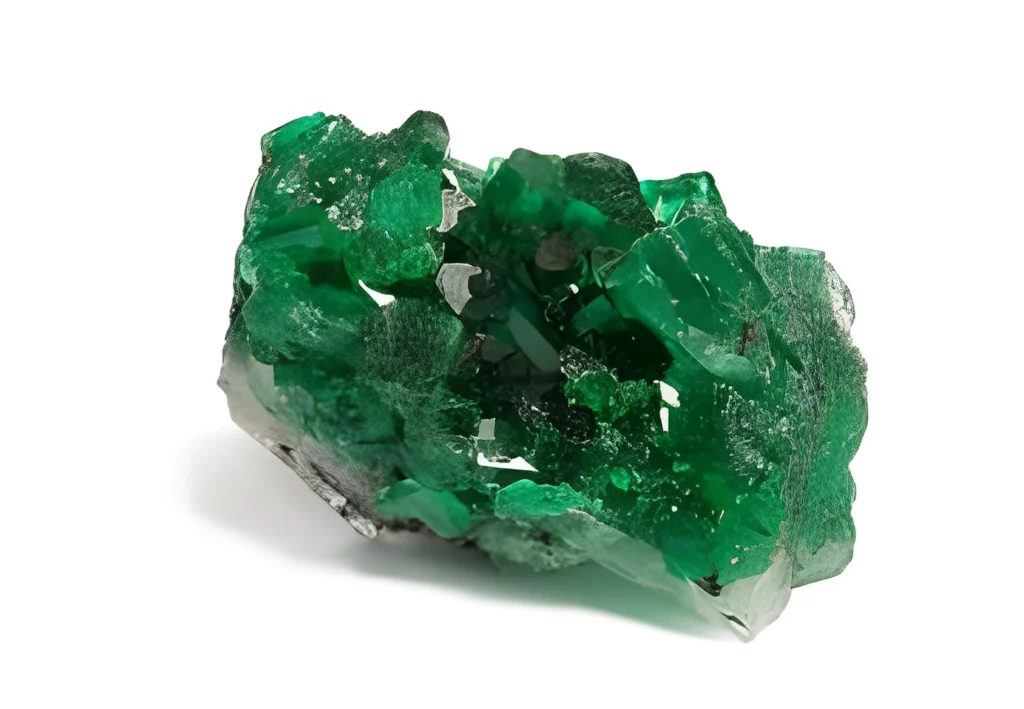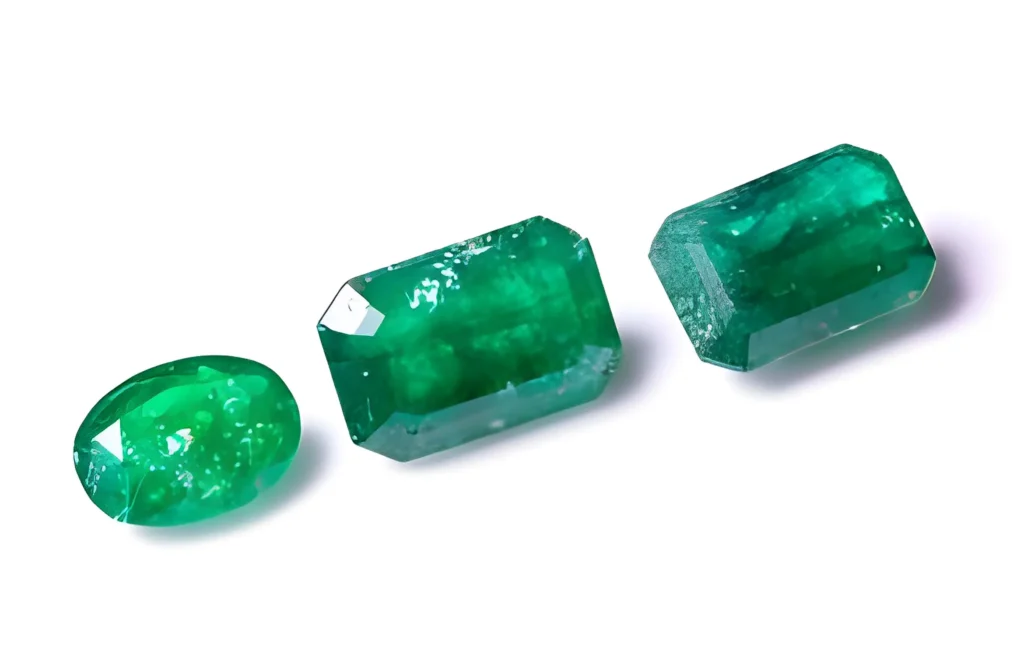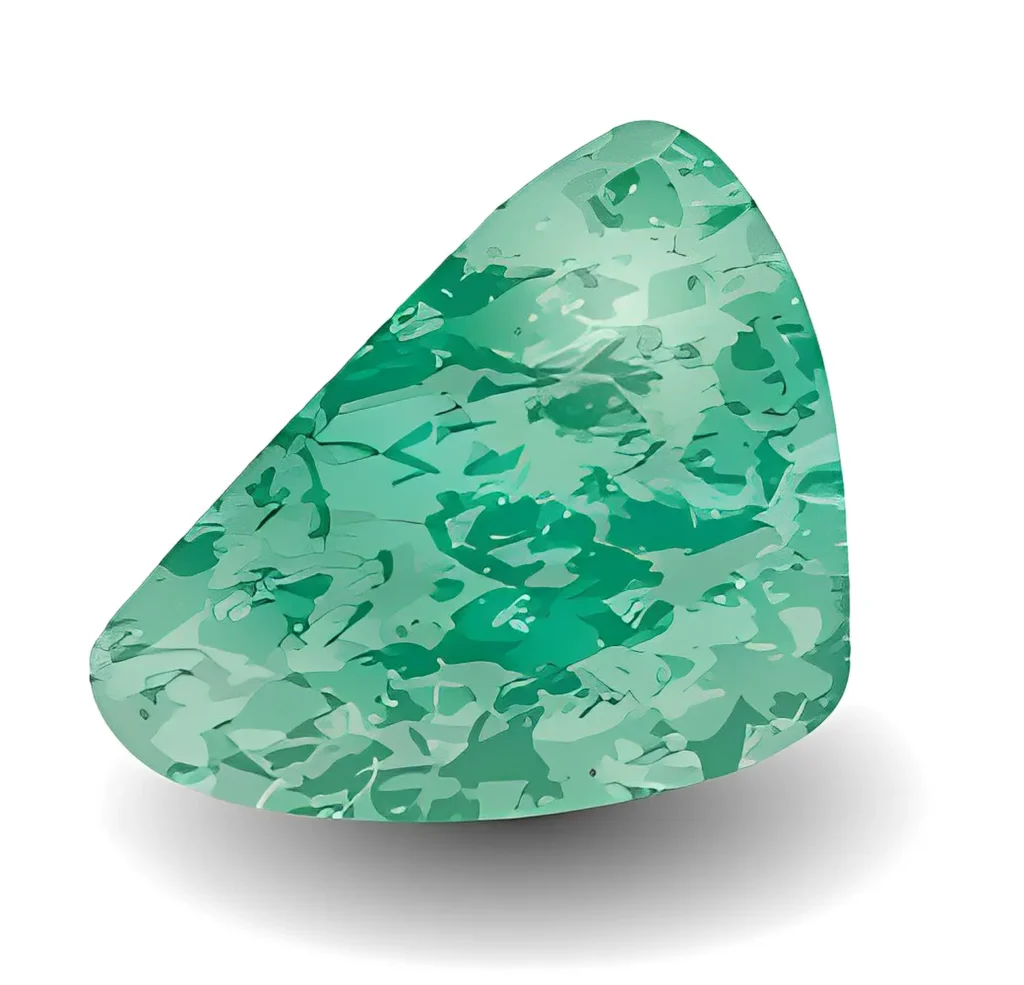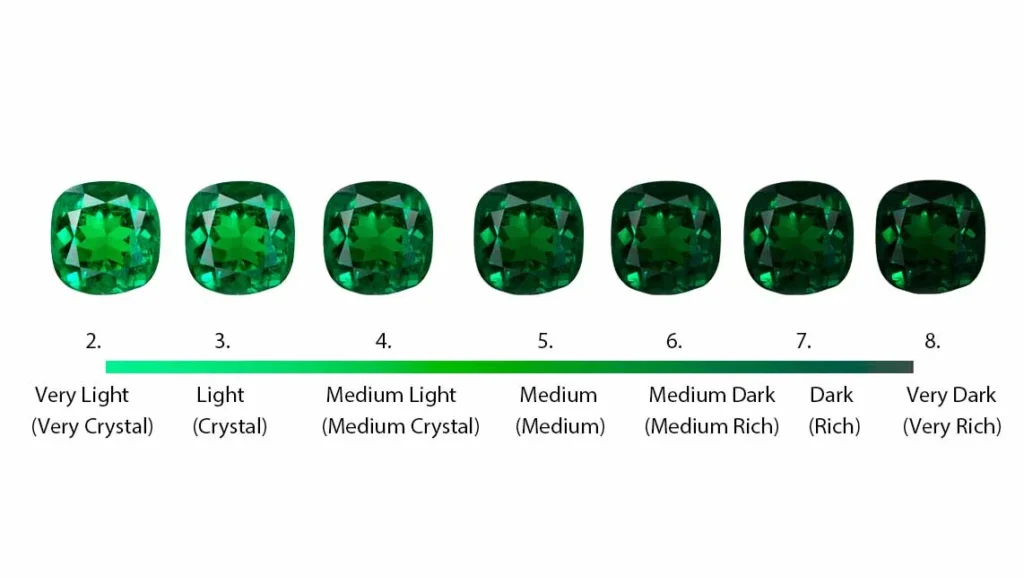Introduction
Emerald stones signify the month of May. Like spring, emeralds represent rebirth, good fortune, youth, and renewal. Emeralds are a type of gemstone that is green in color. There is a variety of mineral beryl, which has a hardness of 7.8-8 on the Moh’s scale.
Emerald stone is rooted in smaragdus, which defines green in Greek. They’re prized for their green color, often described as “emerald green”. These gems are usually transparent, although they may have some internal flaws called “jardin”. Emeralds are rarer and often more expensive than diamonds.
A finely polished stone is well-saturated and has a vivid and bright green hue. They are found in places like Colombia, Zambia, Brazil, and Zimbabwe, with Colombian emeralds being incredibly famous. Many emeralds are treated to make them look better, which can affect their value.
The allure of emeralds transcends the boundaries of time and culture their rich, green hue, their historical significance, and their symbolic meanings all contribute to their enduring appeal. Whether set in a classic engagement ring or a modern, avant-garde necklace, emeralds bring a touch of elegance, mystery, and depth to any piece of jewelry.
What is an emerald?
Green gemstones like emeralds are a subgroup of of the beryl mineral group. Across the world, they are found in igneous, metamorphic, and sedimentary rocks.

Because emeralds are quite delicate, it’s vital to handle them carefully to prevent scratches or chips.
Throughout history, emeralds have been associated with love, rebirth, and luck in many different civilizations. They are frequently used to create a variety of jewelry, including rings, necklaces, and earrings. Some emeralds are huge, well-known, and highly expensive.
The gemstones aquamarine, morganite, golden beryl, and heliodor are close relatives of emeralds.
These stones were reversed as holy gemstones by the Incas and Aztecs and were associated with Venus, goddess of love and beauty, by the Romans.
Stones are cyclosilicates with the chemical composition Be3AI2(SiO3)6. Their lovely green color is made of tiny amounts of chromium and sometimes vanadium.
Chromium is the same element that makes stop signs red, and in emeralds, it produces that striking green hue. They have a hexagonal crystal system with a six-sided prism shape and a flat, hexagonal base.
The majority of us instinctively think of diamonds when considering expensive and rare gemstones; however, emeralds are frequently more expensive since they are more than 20 times rarer than diamonds.
Their prices can range from under $1 per carat to more than $100,000 per carat. Each gem can differ in quality from being opaque and only used for cutting to being clear, beautifully colored, and bringing smiles to auction houses.
Understanding Colors and Grading of an Emerald
Emeralds, the captivating green gemstones, come in a spectrum of colors, and their value is closely tied to their color.

Deep green
These are the most valuable emeralds. They display a vivid, pure green color that’s often referred to as “emerald green” Deep green emeralds are the most sought-after.
Vivid green
Vivid green stones are also rich in green but may have suitable touches of blue or yellow.
Medium green
In this category, emeralds have a good green color, but it might not be as intense or pure as the top-quality stones.
Yellow-green
Some emeralds lean towards a yellowish-green color. While not as valuable as pure green emeralds, they can be beautiful and are sometimes sought-after for their unique appeal.
Bluish-green
Occasionally, emeralds can have a bluish overtone to their green color. These are known as bluish-green emeralds.
Grayish-green
Certain stones may appear to have a dull or grayish-green color. These are generally less desirable and less valuable because they lack the vibrant green that characterizes the best emeralds.
The presence of chromium and vanadium imparts a green color to emeralds. Variations in these chemical elements can lead to different shades.

Clarity
The number and visibility of internal flaws, known as inclusion, can affect color perception and quality. Cleaner stones are more valuable.
Cut
The way an emerald is cut can influence its color by maximizing its brilliance and minimizing the visibility of inclusion.
Origin
Different locations where emeralds are mined produce color variations. Colombian emeralds, for instance, are famous for their deep green color.
When evaluating emeralds, jewelers and gemologists use the “4C’s” grading system, similar to other precious gemstones

Color
It considers the hue, saturation, and tone of the green. Pure, intense green with no other hues is highly prized.
Clarity
Examines the presence of inclusions and how they affect the stone’s transparency and beauty. Fewer inclusions result in a higher clarity grade.
Cut
The quality of the emerald’s cut is vital. A well-executed cut enhances its color and minimizes the visibility of inclusions
Carat weight
This simply measures the size of the emerald. Larger emeralds are rarer and often more valuable.
Healing Properties of Emeralds
Many people believe that emeralds possess unique healing and metaphysical properties that can enhance emotional well-being and energy balance.

Emotional balance
Emeralds are thought to promote emotional balance and stability. They’re believed to help calm the mind and reduce stress, making them valuable for managing anxiety and emotional turmoil.
Enhanced love and compassion
Some believe that emeralds can open and nurture the heart chakra, promoting love, compassion, and empathy.
Protection and clarity
Emeralds are considered protective stones, thought to shield against negative energy and promote clarity of thought.
Physical healing
In ancient traditions, emeralds were believed to have physical healing properties. They were used to treat various ailments, from eye problems to digestion issues.
Emerald Origins and Mining
Historic and Contemporary Emerald Mining Locations
Colombia
Colombia’s emerald mines have long been renowned. Colombian emeralds are prized for their intense, unadulterated green hue.
Zambia
Another important participant in the emerald industry is Zambia. Emeralds from Zambia are renowned for their deep green hue with a little blue undertone. Zambia is known as one of the world’s top emerald producers, in part because of mines like Kagem.
Brazil
Brazil contains emerald mines in places like Minas Gerais and Bahia. Brazilian emeralds come in a variety of green hues and occasionally contain unusual inclusions that give them their particular personality.
Emerald treatment and synthetic emeralds
Producers treat emeralds with methods like applying colorless oil or creating synthetic materials to enhance their appearance and ultimately impact their value.
Challenges and Ethical Considerations in Emerald Mining
Emerald mining faces challenges like dangerous working conditions, environmental impact, and rights conflicts, while some mines are improving ethical concerns like fair wages and community benefits.
Historical Significance of Emeralds
Emeralds have a long history and have been coveted for their beauty and mystical powers since the Bronze Age. They have been used in many cultures and civilizations.
Ancient Egypt
Emeralds were symbols of fertility, revitalization, and eternal youth. Pharaohs were often buried with emeralds to ward off evil spirits in the afterlife.
Ancient Rome and Greece
Emeralds are associated with the goddess Venus. They wore emeralds as jewelry and believed they could improve one’s vision, and memory, strengthen love, and promote fidelity.
Indian culture
In India, emeralds were linked to the god Krishna. They believed emeralds could bring god fortune and were a symbol of love.
Pre-Columbian societies
The Incas and Aztecs of South Africa defined emeralds as sacred monuments.
Modern times
Today, emeralds are still highly valued and often associated with luxury, wealth, and love. They are used as engagement rings and other jewelry to symbolize deep affection and commitment.
FAQ’s
Emeralds are rarer and often more expensive than diamonds.
Emeralds have a lifespan of 5 to 8 years.
Due to its durability, emeralds are very good gemstones to wear day-to-day without any issues.
Read more…..
